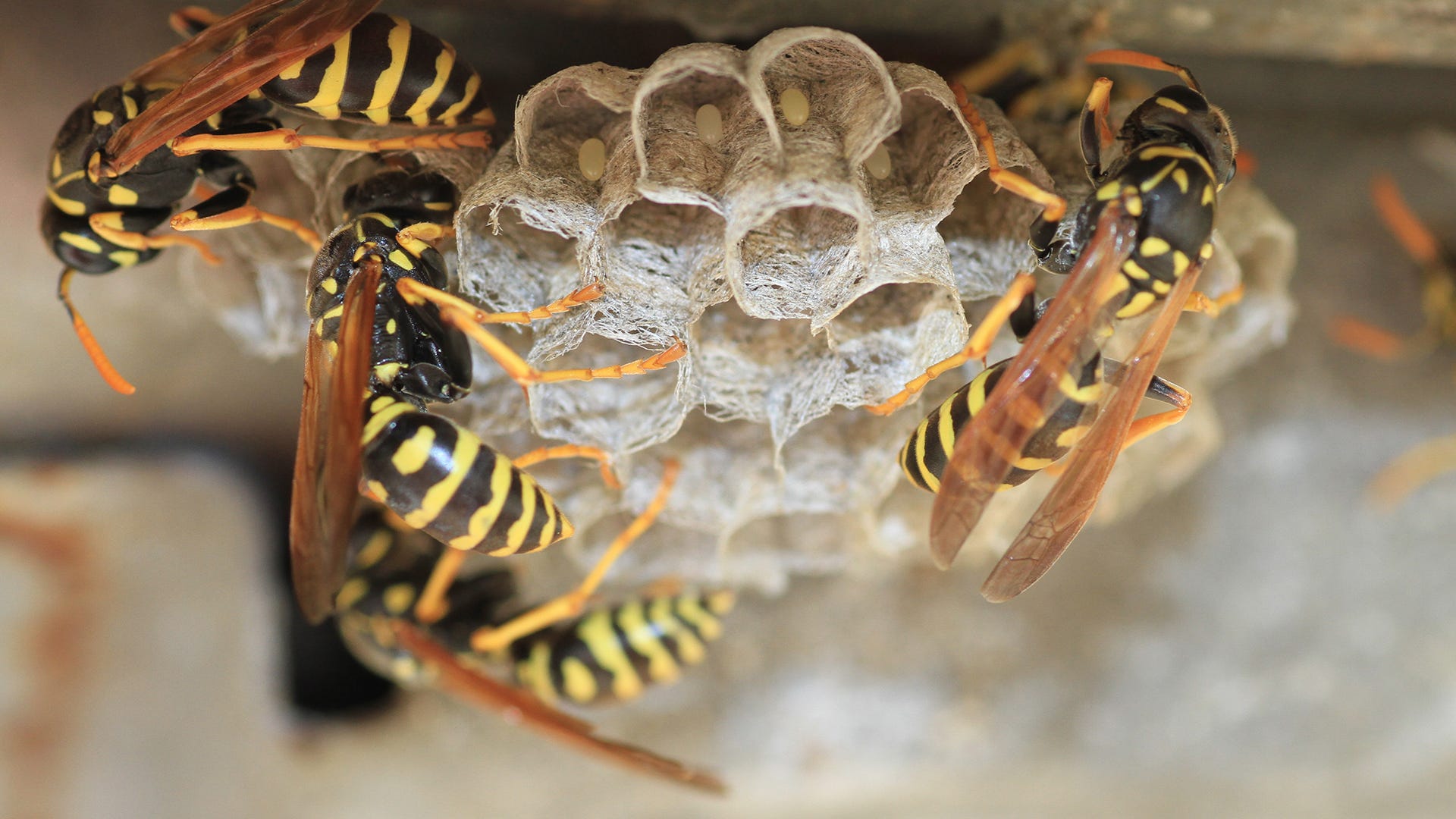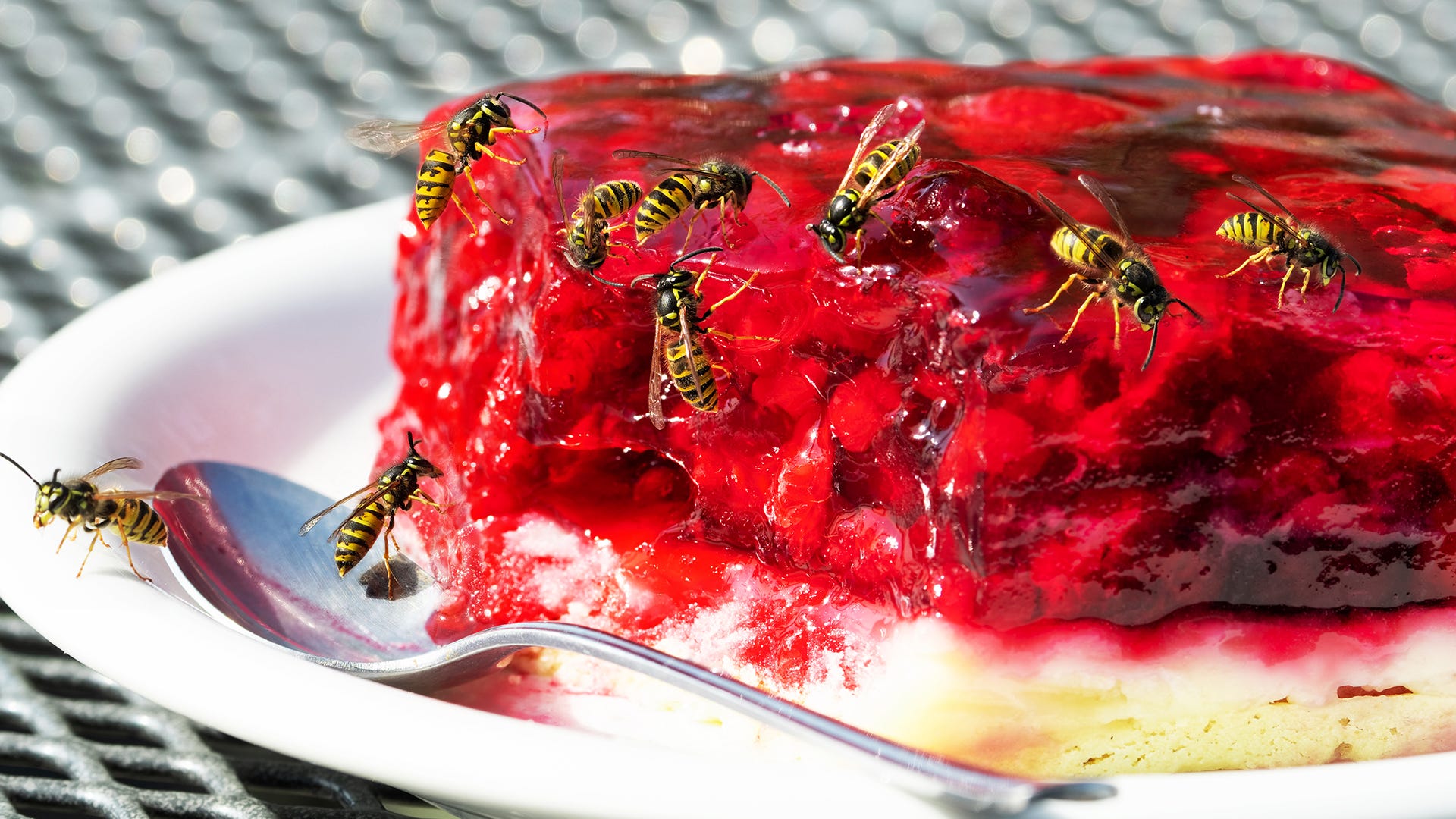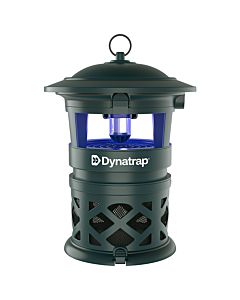
Wasps aren’t the kind of insects you want to make angry when trying to remove them from your home. So how can you get rid of them without them turning aggressive on you? What about avoiding their sting? Wasps are pests that you definitely don’t want around the house. Stop wasps before they get the chance to create a nest near your home with these prevention tips, while learning how to get rid of them if they’ve already taken up residence.
What Do Wasps Do?
You may think that wasps and bees are the same - they aren’t. Wasps are slender insects that are smooth and shiny, and feed on other insects. Only female wasps can sting. When they sting, they can sting you repeatedly – they don’t die after they sting like bees. There are 30,000 identified wasp species, so there is quite a variety when determining which ones are showing up at your house.
Most wasps are docile until provoked or feel threatened. Unless allergic to the venom, stings are nonthreatening. Like bees, wasps have a queen and follow her commands, going wherever she goes. The queen is bigger than the others in the colony and stays inside the nest most of the time.
While wasps don’t cause a large amount of damage, don’t ignore them. Occasionally, wasps can damage the wood and infrastructure of your home. If the wasp nest grows to be too big, it can pull on the materials it’s hanging on, and could cause the structure to eventually give way. Wasps can also chew through surfaces, leaving holes and laying eggs in small spaces that you might not notice right away.
Why Do I Have Wasps?
Wasps start looking for a place to build their homes when the weather gets nice. Unfortunately, that means they might find your home to be the perfect foundation to construct their home. When preparing to build their nest, wasps look for a base from which they can hang. These nests can be located on edges of roofs, sheds or garages, trees, or even indoors near screens or doors. In some cases, you might find a colony in a birdhouse.
Flowers and other plants might be attracting the wasps closer to your home. These bothersome bugs are attracted to brightly colored objects, so your lawn decorations might be luring them in as well. They also might find food in your trash and compost piles, including any rotten fruit that may have dropped and started decaying on the ground.

How to Get Rid and Prevent Wasps
Preventing wasps is a lot easier than dealing with them after they’ve infested your property. Covering your garbage, making sure there aren’t any convenient food sources, and preventing other attractions is an easy first step.
Because wasps are territorial, they often avoid places where other nests are. You can purchase fake nests to deter wasps from building nests near your home. As a temporary measure, you can also hang a paper bag filled with air. Rubbing soap on the linings of common nesting spots can also discourage wasps and act as a repellent. The simplest option would be to invest in outdoor insect traps that help catch wasps and other bugs before they start building nests on your property.
If you’ve identified that you already have a wasp problem, there are steps you can take to rid them. Depending on the nest size, where the nest is located, and the specific type of wasp species, the solutions for your wasp problem varies.
If it’s early spring or summertime and you spot small cells of a nest building, knock off these small cells, which contain eggs and will cause the problem to grow. Only approach the smaller clumps of cells when you’re positive that the queen is not in the nest. If you plan on doing this, make sure you dress appropriately, covering your body with clothes or accessories, like a handkerchief or head net. If the nest is large, DO NOT knock it down until you’ve taken other steps.
When an individual wasp is disturbed, it sends a distress signal to the colony, which is why wasps swarm and attack. It’s best to approach with caution and stay at a distance until you’ve planned out exactly what you’re going to do. Always approach a nest when the wasps are less active, at either dusk or dawn.
Here are some ways that you can treat for wasps:
- Nest Drenching – spraying insecticides specifically for wasps in the nest
- Nest Dusting – using a powder form of insecticides for wasps and sprinkling it on the nest
- Perimeter spraying – using the insecticide spray alongside the entire house (this is the best method if you’re not sure where the nest is located)
- Baiting – draw the wasps out of the nest by attracting them with DIY or professional bait
When trying to remove a nest, always wear the proper clothing and coverings. Wasps are aggressive, and their stings can hurt. Never try knocking down an active nest, spraying a nest with water, or burning it.

Keep Wasps Away
When it comes to wasps, how do you keep them away? Tell us how you battle these fearsome pests on your next visit to our Facebook Page! Be sure to check out our outdoor and indoor products that can help you keep your property and home bug-free, no matter the season.










